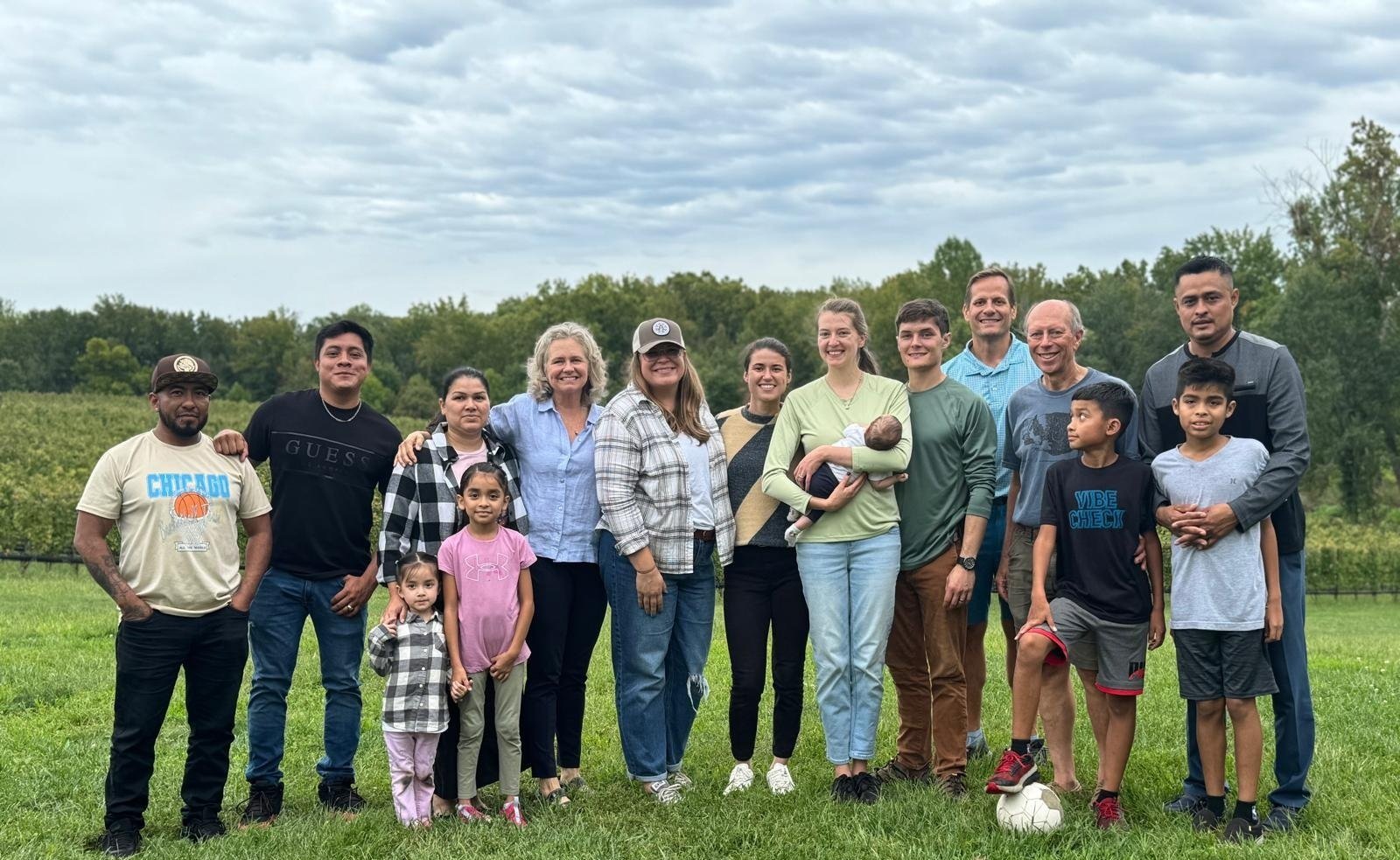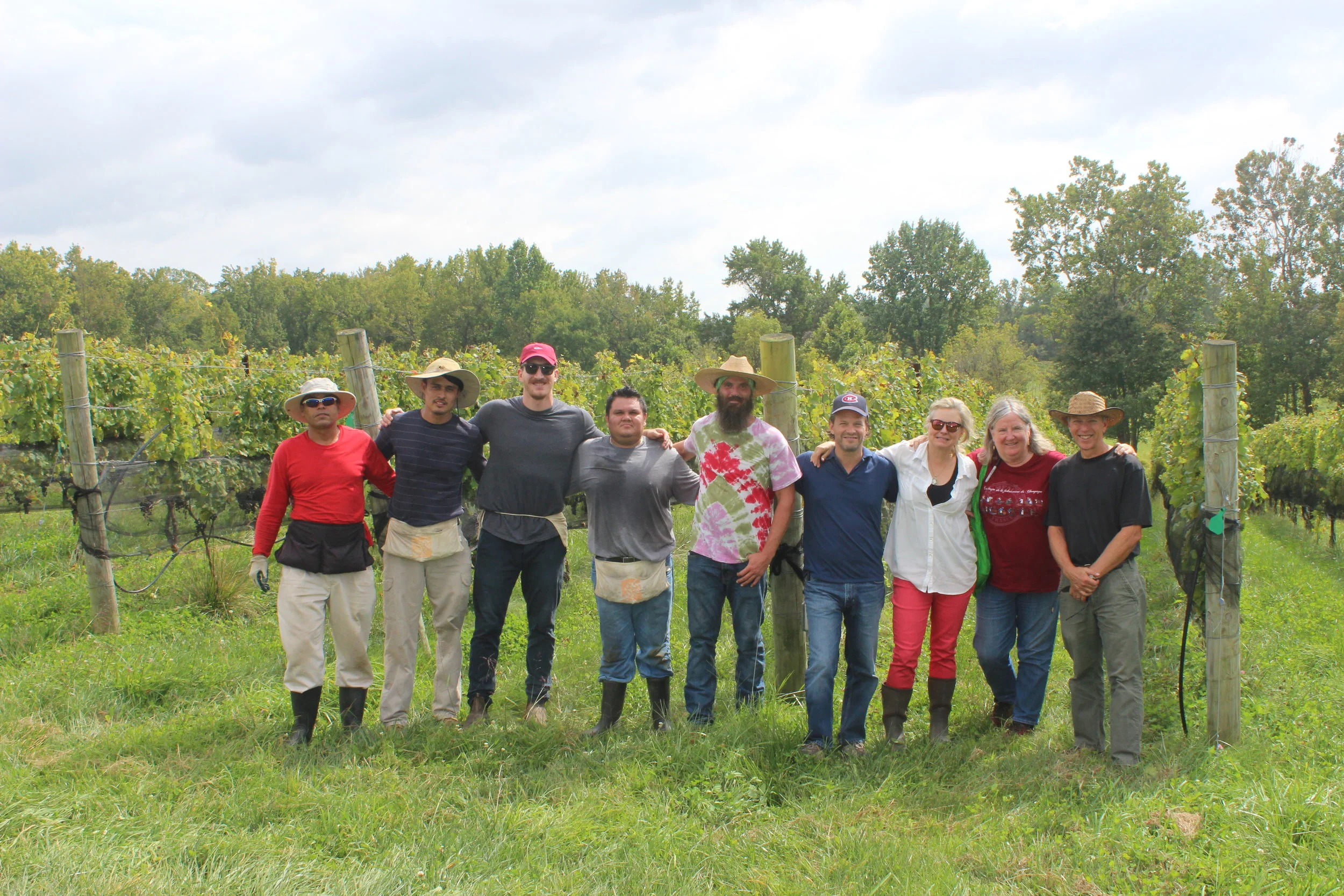Just as we aim to farm in the service of nature, we seek to farm in the service of our community. In the spirit of reporting to our community “shareholders,” I offer this 2024 review. It’s lengthy, but there is much to report: a fantastic harvest, widespread recognition of our environmental approach, and the slow emergence of plans for our next chapter.
2022 Vintage Update: Doing Our Part
Every season, I’m dazzled that the buds break, shoots grow, inflorescences bloom, and fruit sets and ripens. It’s a bit like the sun coming up in the morning. Who can complain after that miracle? But some vintages are more successful than others. And despite the challenges, 2022 was more triumphant than most.
2020 Vintage Check-in
The year started normally enough. The autumn had been good to us. Warm weather, absent the extreme rain of 2018, meant healthy vines entered dormancy. We enthusiastically embraced new cover crops, created a novel composting program designed to stimulate mycorrhizal fungi, and bought a flail mower to mulch vine pruning wood in the vineyard.
2019 Vintage Summary: Tranquility and Transformation
Things may have seemed simple in 2019, but they were not.
After the rains of 2018, the 2019 vintage brought welcomed change. Unusually dry weather that started in mid-July helped make the harvest, at first blush, delightfully simple. The vines politely stopped growing at veraison, focusing their energy on ripening the fruit. The vineyard team was, well, in the vineyard, the work progressing quickly and efficiently. Picking, sorting, and processing seemed almost effortless. The wines made themselves.
2018 Vintage Summary
Tuesday, October 2 was a beautiful, if somewhat warm, autumn day – the kind of day that we hope for in early October, when we are typically just starting to pick the black grapes. But this, the final day of picking in 2018, signaled the perplexing character of the vintage. The image of Dodon’s weather vanes pointing toward each other on an otherwise lovely morning is its lasting symbol.
2017 Vintage Summary: A Year of Providence
In what has become a metaphor for the 2017 vintage, a black widow found her way onto the sorting table in the last hours of harvest. We’ve always known that there are lots of black widows in the vineyard, but mostly they keep to themselves, quietly helping rid the vines of unwanted insects. How she got to the table is anyone’s guess. It seems unlikely that she was on a cluster when it was snipped into an unsuspecting hand, so perhaps she crawled into a picking basket that inadvertently landed on her web. In either case, we popped both the spider and her grape into the sorting bin, and off she went to the compost pile. No harm done to either party.
2016 Vintage Summary
The red wines are now in tank, primary fermentations nearly complete, extended macerations underway, and the conversion from malic acid to lactic acid getting starting. While the next movement of the vintage is still being written, the personality of the growing season is now clear. Starting, as spring always does, with anticipation and hope, the rhythm quickly began alternating between moments of dramatic threat and pastoral idyll. Like Sibelius’ second symphony, the sense was that of an ongoing conversation between death and salvation, personified by increasing tension, fatigue, and anxiety before ending in a final heroic conclusion.
2015 in Review
It was a busy year around Dodon. In February, Matthieu Finot joined the team as consulting winemaker. Matthieu’s training in Burgundy and his 23 years in Virginia bring remarkable experience and a steady hand to the cellar team. In March, we were joined by vineyard consultant Lucie Morton and geologist Bubba Beasley to map the vineyards using electromagnetic induction. Our immediate motivation was to find those areas most appropriate for each varietal for our April planting of eight acres and 16,000 vines.
2013 Harvest Review
2013 Harvest Update
Harvest is what we work for. And now it’s in full swing. The Sauvignon Blanc and Chardonnay are in the cellar, settled, and the fermentations started. We started slow, a good warm up for the new cellar, with just 750 pounds from the third leaf SB in block 12. The fruit was very ripe, brix 23.8 for those who care about sugar levels, and very clean. Young vines always yield less fruit, but even we were surprised a few days later when the fourth leaf SB in block 11 produced 3000 pounds from less than a half acre. We’re fermenting those two lots separately, very slowly, but we’ll eventually bring them together to produce a delightful wine, with Block 11′s slightly less ripe fruit bringing SB’s characteristic aromatics to merge with fullness on the mid-palate contributed by Block 12. In the cellar, it’s remarkable to taste the emerging wine each day, spritzy and sweet, and complex with yeast as the fermentations get rolling.







